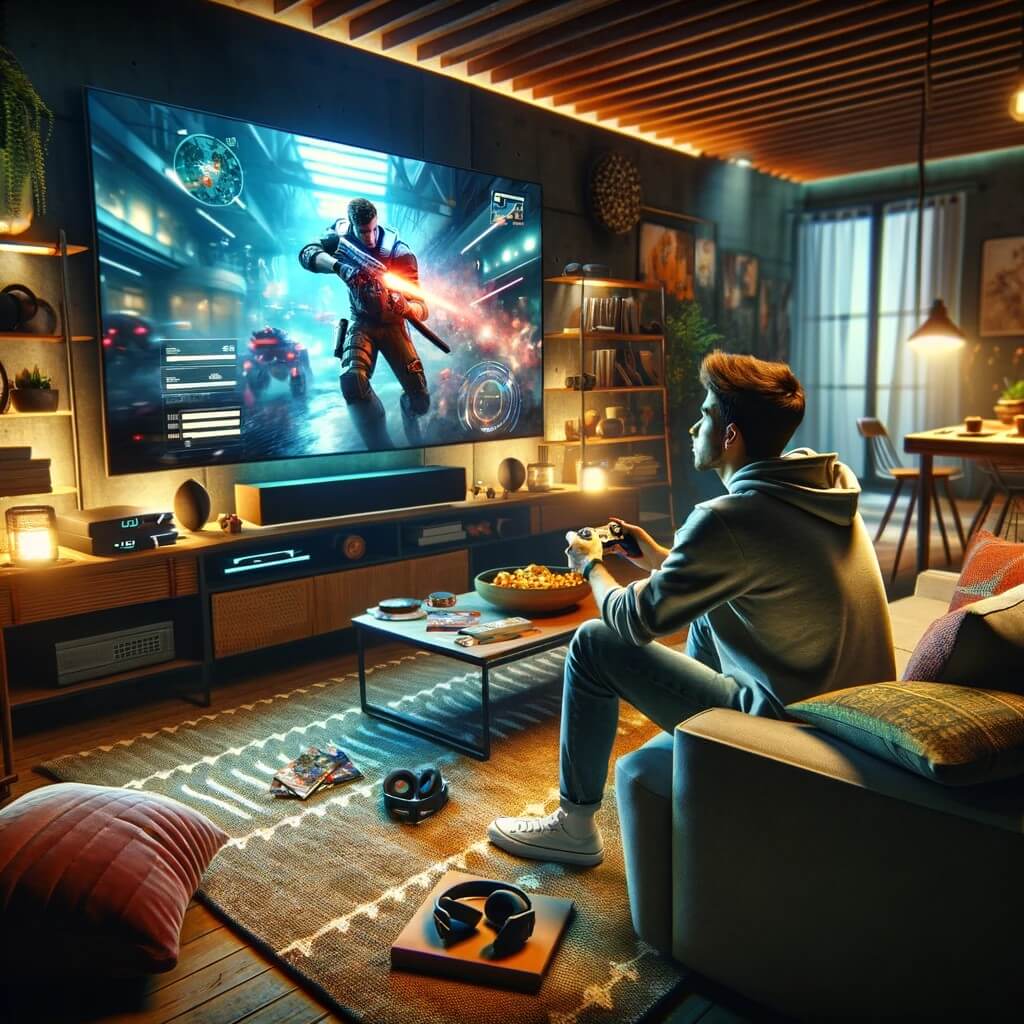
At one point, there was no single-player or multiplayer. All games were single-player. That’s how it all started. So, how did we go from playing solo to preferring to play with complete strangers on the internet? The journey, or rather the shift towards multiplayer, is a rather interesting story we want to share with you.
Multiplayer Was an Answer to Many Different Things
Two decades ago, talking about multiplayer in gaming felt like a completely different topic. It felt almost like a fad because, at one point, it seemed like all games were offering multiplayer modes, even if those games were traditionally single-player titles. This wasn’t the massive upheaval some made it out to be, and single-player narratives in these games remained untouched. But here we are, almost two decades later, and our interactive entertainment is greatly shaped by multiplayer games. The multiplayer push has hit a faster, harder stride. It’s less of a gradual evolution and more of a constant stream of reinvention, with new forms cropping up almost daily as if the industry has collectively decided there’s no time to sit still anymore. Single-player modes are an addition to multiplayer gameplay, the opposite of how it all started. And while a good percentage of players still prefer single player games, multiplayer is a norm, rather than addition.
Video games used to be a medium that tells a story through interactive engagement, making players the participants in this digital experience. There was a competition between developers who would push to create richer and more ambitious narratives. Now, many don’t even bother. Instead of exploring what the medium could say or how it could grow, a fair chunk of the series seems perfectly fine, tossing the idea of a story out the window entirely. Just give players an online map, some objectives to grind, and call it a day. Sure, it’s what some gamers want: endless connected gameplay and a perpetual loop of interaction. And we completely understand why that shift happened from both the player’s and studio’s perspective. It makes sense. World of Warcraft, for all its flaws and quirks, set a revenue benchmark the industry had never seen, and, honestly, still hasn’t. Every major studio has tried to replicate it, and most have fallen flat, even Blizzard themselves. Then League of Legends came along and flipped the script, proving you could give the game away for free and still rake in millions just by selling $10 skins to a community that doesn’t blink at the price. That’s the thing, it worked because the players were all in. Now, we’re starting to see the fallout of this business model.
The Story of Online Casinos
Online casinos fit perfectly when talking about multiplayer, interactive entertainment. They have always been, from their very beginning, transparent in that regard – imagined to be exactly like that. And while we can safely conclude the online casino market has evolved over the years, the very core experience remains the same. Operators figured out the formula a long time ago, and now the variations mostly go around localisation, bonuses, exclusives, and such. For example, in India, Big Boost India provides tailored gaming experiences in line with this, and sometimes brands have localized versions for several different markets as well. It’s a good way to offer the same gaming experience to different people, something the gaming industry should learn from.
Multiplayer Continues to Rule the Industry
For developers, focusing on multiplayer-only games often comes down to practicality. It sidesteps the labyrinth of crafting sprawling single-player campaigns that demand a lot of manhours to be put in level design, whether linear or open-world, all to cater to just one player at a time. Overwatch was a good case in point. Originally part of Blizzard’s ambitious Project Titan, a sprawling, unrealized world, it shed that ambition, opting instead for a streamlined focus. Now, instead of juggling massive environments and deep lore, it leans on a handful of multiplayer maps and a roster of heroes built for competitive play. Is that a downgrade or just efficiency? It depends on who you ask. Or maybe it’s just easier to sell. Either way, the shift to multiplayer and interactive entertainment feels less like evolution and more like forgetting what made the medium unique in the first place. Then again, who’s really asking for “unique” when the lobby’s full?






Wow wonderful blog layout How long have you been blogging for you make blogging look easy The overall look of your site is great as well as the content
You can definitely see your enthusiasm in the work you write. The world hopes for more passionate writers like you who aren’t afraid to say how they believe. Always follow your heart.
vj10kj
fywojf
1
Hi , I do believe this is an excellent blog. I stumbled upon it on Yahoo , i will come back once again. Money and freedom is the best way to change, may you be rich and help other people.
You are my intake, I possess few web logs and sometimes run out from post :). “Analyzing humor is like dissecting a frog. Few people are interested and the frog dies of it.” by E. B. White.